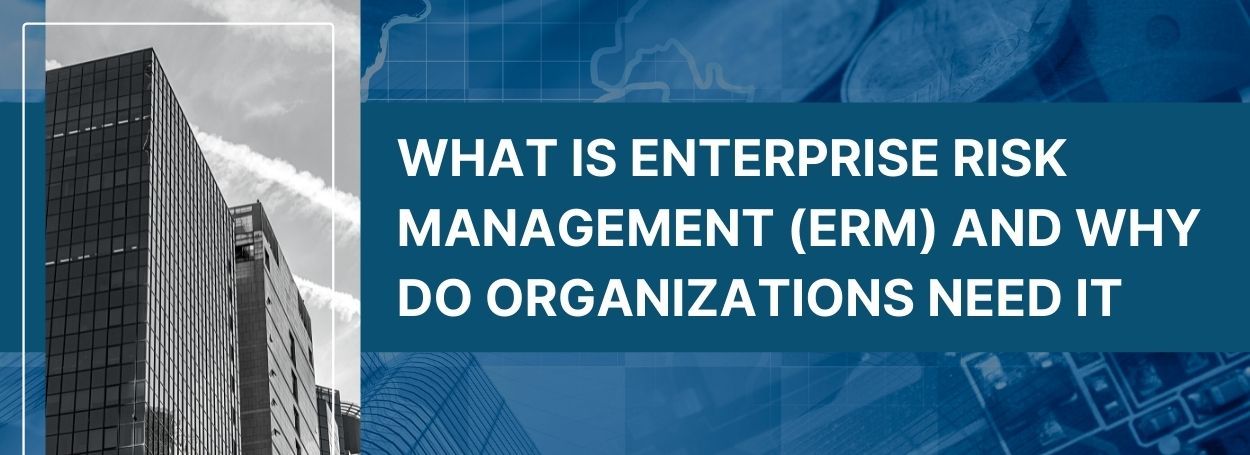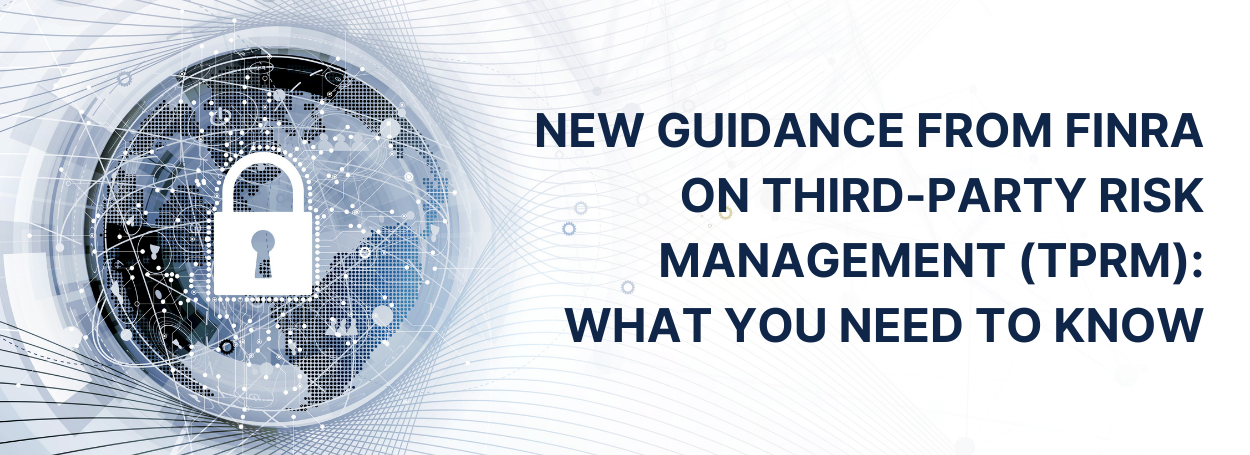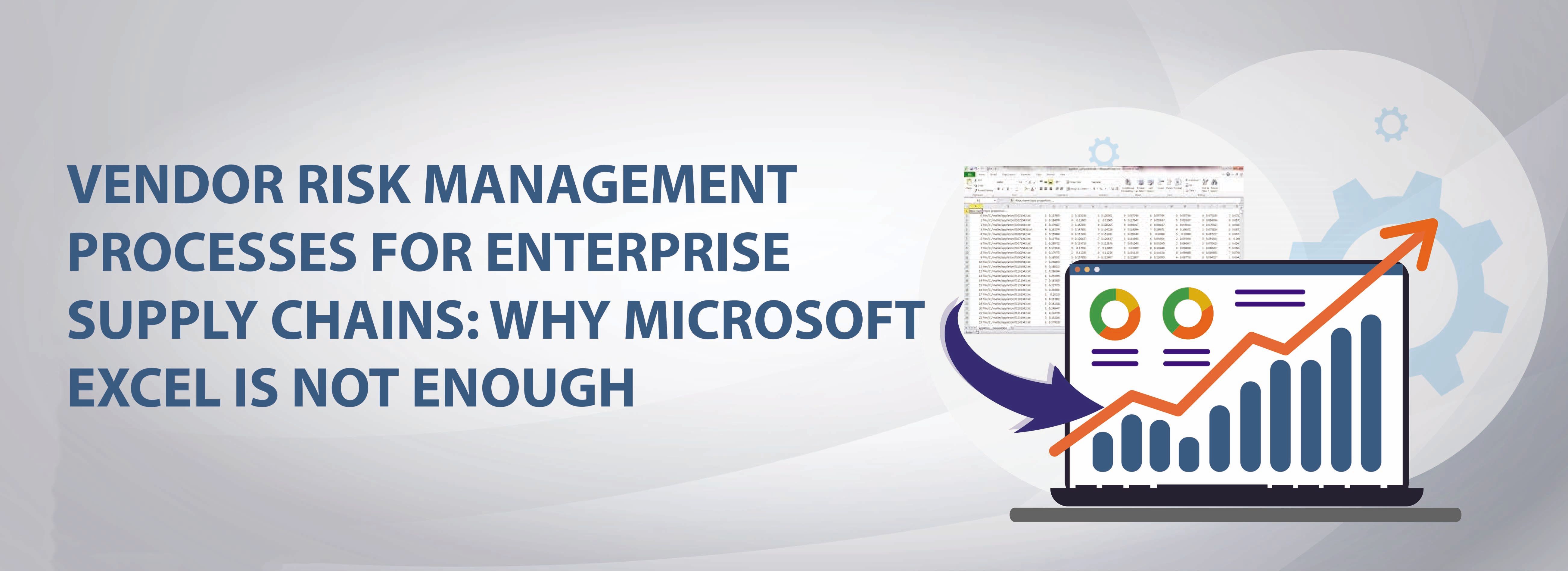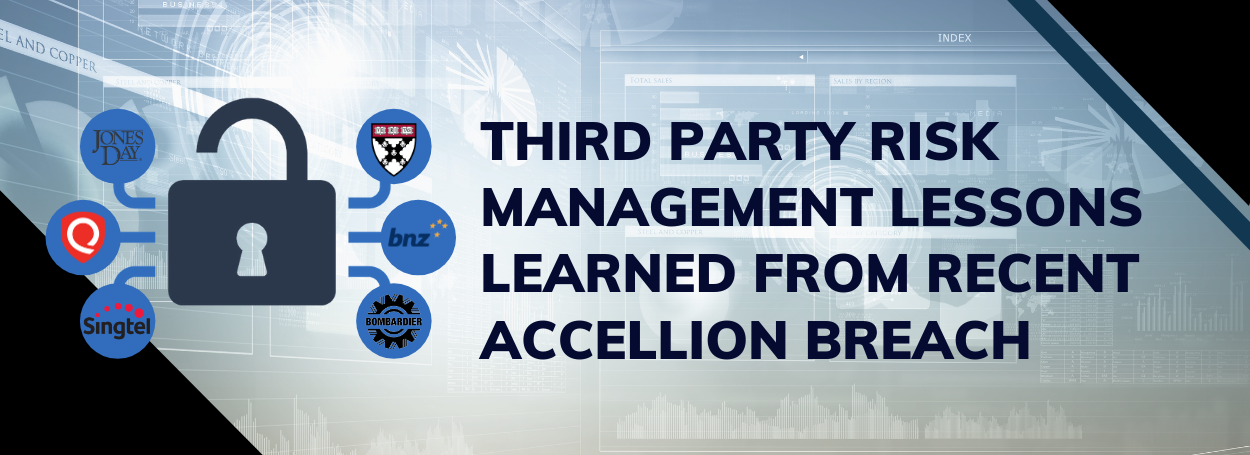What is Enterprise Risk Management (ERM) and Why Do Organizations Need It

In the modern business landscape, organizations have many opportunities to serve their target market, expand their operational footprint, and get a competitive advantage. But these great opportunities also come with significant risks.
These risks affect their cybersecurity, compliance posture, business continuity, and financial performance. To minimize material damage from these risks, companies need a comprehensive way to identify, analyze, prioritize, and address them.
Here’s where enterprise risk management (ERM) comes in.
What Is ERM?
In the Enterprise Risk Management – Integrated Framework (2004), COSO (Committee of Sponsoring Organizations of the Treadway Commission) defines ERM as a “process, effected by the entity’s board of directors, management and other personnel, applied in strategy setting and across the enterprise, designed to identify potential events that may affect the entity, and manage risk to be within the risk appetite, to provide reasonable assurance regarding the achievement of entity objectives.”
This definition shows that ERM is a “top-down” risk management approach that requires leadership-level strategizing, decision-making, and control.
The typical firm faces many types of risks from:
- Cyberthreats
- Operational disruptions
- Economic crises such as recessions or unemployment
- Geopolitical instability
- Natural disasters
- Man-made hazards such as terrorist attacks
To minimize the impact of these business risks, organizations must understand their risk exposure and act early and appropriately. An ERM program can help meet these business objectives.
ERM is about managing all the risks that affect an organization or may affect it in the future. It is a holistic and enterprise-wide approach to approach the risk landscape.
In addition to the above sources, this risk landscape may also include risks from third parties. The risk management process includes strategies, tools, and resources to manage these risks. Over time, the enterprise may find it worthwhile to invest in a third-party risk management (TPRM) program for managing third-party risk.
Why Is ERM Important for Organizations?
ERM provides numerous qualitative and quantitative benefits:
An Organized Way to Manage Enterprise Risk
ERM provides a structured set of tools, processes, policies, and people to help organizations break down information silos, uncover vulnerabilities, and address enterprise-wide risk. They can prepare for the potential for harm and prioritize risk mitigation efforts to:
- Maintain operational continuity
- Strengthen their cyber defenses
- Defend their business-critical assets and data
- Protect their reputation
ERM – and TPRM – can also help optimize supply chains and minimize potential damage from supply chain attacks and disruptions.
Improved Risk Reporting and Communication
The best ERM tools provide interactive visualizations, reports, and dashboards to display risk data and insights. Thus, ERM helps improve risk reporting, making it easier to quantify, manage, and control risk. Risk reporting also plays a part in communicating risk information to relevant stakeholders and business units.
Create a Risk-Aware Culture
Effective enterprise risk management is an organization-wide effort that increases risk awareness and promotes a shared understanding of risk throughout the company. It also helps reinforce behaviors to protect the organization and encourage employees to act in a way that:
- Improves human productivity and efficiency
- Enhances customer relationships
- Enhance decision-making concerning risk and risk mitigation
The 8 Key Aspects of ERM
Most standard enterprise risk management frameworks suggest that ERM consists of eight interrelated aspects:
Goal Identification and Objective Setting
The starting point of ERM is to first set its vision, mission, and objectives. These elements ensure that everyone is working towards a common goal and is aware of their roles and responsibilities in meeting this goal. Goals and objectives also inform the organization’s risk tolerance, risk appetite, and overall risk management plan.
Risk Assessment
Risk assessment is a repeatable, step-by-step process of identifying important risks, analyzing their potential probability and impact, and prioritizing them for mitigation or remediation.
It’s crucial to categorize each risk type – third-party, operational, strategic, regulatory, etc. – to implement the proper security controls and determine the most appropriate risk response.
Risk Response
Risk response may vary depending on the type, probability, and impact of identified risks. Thus, the organization may:
- Avoid risk
- Accept risk
- Transfer risk
- Reduce risk
These choices should be mapped to specific actions to effectively manage the risk.
Internal Business Environment Assessment
The organization’s business environment, code of conduct, work culture, and leadership capabilities all play a part in effective ERM initiatives. These factors influence risk awareness, risk-averse behaviors, and risk response.
Event Identification
With a robust ERM program, the enterprise can reveal threats and vulnerabilities that may hinder the organization’s progress and competitiveness. It may also uncover opportunities that could yield tangible benefits. It’s essential to identify both to ensure that leadership can tackle the threats and capitalize on the opportunities.
Controls Design
Robust controls to drive consistency such as policies, employee training, values, and ethics should be part of the enterprise risk management program. These controls should specify the standards for desirable behaviors, thresholds for risk response, and tactics to address potential risk.
Information and Communication
Clear risk communication increases risk awareness, enables employees to identify and assess significant risks, and act appropriately to reduce the organization’s risk exposure.
Continuous Monitoring
As the organization’s risk landscape evolves, its ERM framework should also evolve. Only then can it implement the best controls to continually mitigate known and emerging risks. Metrics and KPIs (key performance indicators) provide a consistent baseline to monitor performance and alert senior management when potential risks are looming.
How Vendor360 Can Help You Manage Enterprise Third-party Risk
For many organizations, third-party risk is one of the most serious kinds of risk. TPRM becomes vital as organizations work with an increasing number of third parties.
A robust TPRM program includes vendor risk assessment, onboarding processes, and performance management. However, manual TPRM methods using spreadsheets and email make it harder to get risk oversight, keep up with vendor risk trends, and make appropriate risk decisions.
Vendor360 simplifies TPRM with advanced automation, pre-built templates, and a cloud-based API architecture. It provides a single source of truth and a centralized platform to manage vendor information and create vendor risk tiers. Actionable risk insights and intelligence improve third-party risk oversight and spending.
To see how Vendor360 can benefit your organization, schedule a demo.


